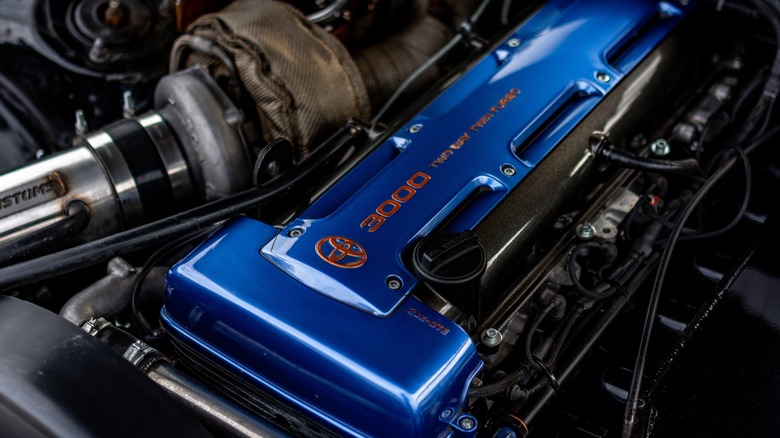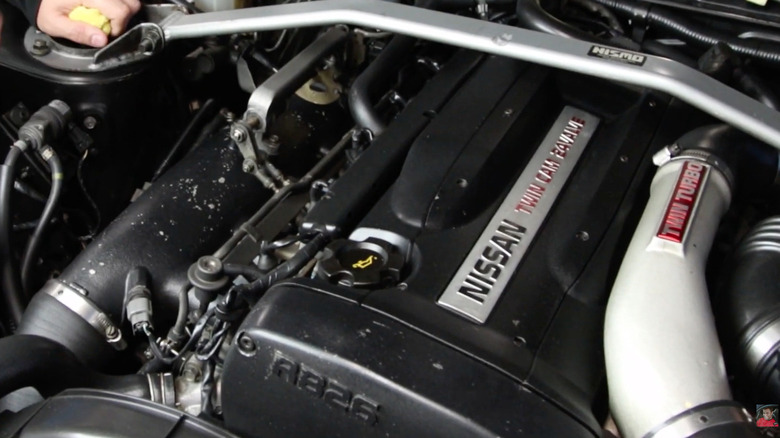RB26 Vs 2JZ: Which Is The More Powerful Engine?
Comparing the powerful Nissan RB26 engine, more accurately the RB26DETT, to Toyota's 2JZ engine, specifically the 2JZ-GTE, reveals that, according to the manufacturers' specs at least, the turbocharged engines had nearly identical ratings of around 280 horsepower. However, the manufacturers' published ratings may not be entirely accurate.
A well-circulated rumor has it that in the late 1980s and early 1990s Japanese automakers had some sort of gentlemen's agreement to keep horsepower near the 206kW (276-horsepower) mark. As evidence that the published horsepower ratings were inaccurate, the MK4 Toyota Supra, one of the coolest JDM cars ever, came stateside with a Toyota 2JZ-GTE under its hood rated at 320 horsepower. Video evidence of a 1993 Supra shows the stock powertrain making 276 horsepower at the rear tires.
While the RB26 never made it to the U.S. in new production cars, it's been on the radar of American auto enthusiasts since its 1989 introduction in the R32 Nissan Skyline GT-R, affectionately nicknamed Godzilla. In recent years, some older RB26-powered GT-R models have made it stateside, and independent dyno testing reveals values in excess of 290 horsepower at the tires.
What's the difference between the Toyota 2JZ-GTE and a Nissan RB26DETT?
Both engines share similar architecture with their inline six-cylinder design residing in stout cast-iron engine blocks, aluminum cylinder heads with four valves per cylinder, and twin turbochargers. The most obvious difference between the two Japanese powerplants is the Toyota's larger displacement.
The Nissan RB26DETT has a displacement of 2,568cc (156.7 cubic inches), rounded up to 2.6 liters as represented by the number in the engine's name. Its displacement is achieved from its six 86mm (3.386-inch) diameter cylinders combined with the 73.7mm (2.90-inch) stroke provided by the crankshaft. Toyota's 2JZ-GTE, on the other hand, displaces 2,997cc, or 3.0 liters, using the same 86mm diameter cylinders with an 86mm crankshaft stroke, achieving the elusive square bore and stroke.
While the Toyota's longer stroke allows it to produce more torque (320 lb-ft compared to 289 from the RB26), the Nissan engine is capable of flowing more air through it, allowing more horsepower, at least in stock form. Heavily modified and tuned versions of either engine can exceed 1,600 horsepower, but the larger-displacement 2JZ-GTE can reach 2,000 horsepower in the right hands.

